This traditional Kerala-style mango pickle crafted by Chef Umeshkumar SS from Niraamaya Retreats Surya Samudra in Kovalam, brings bold, nostalgic flavours to every traditional feast
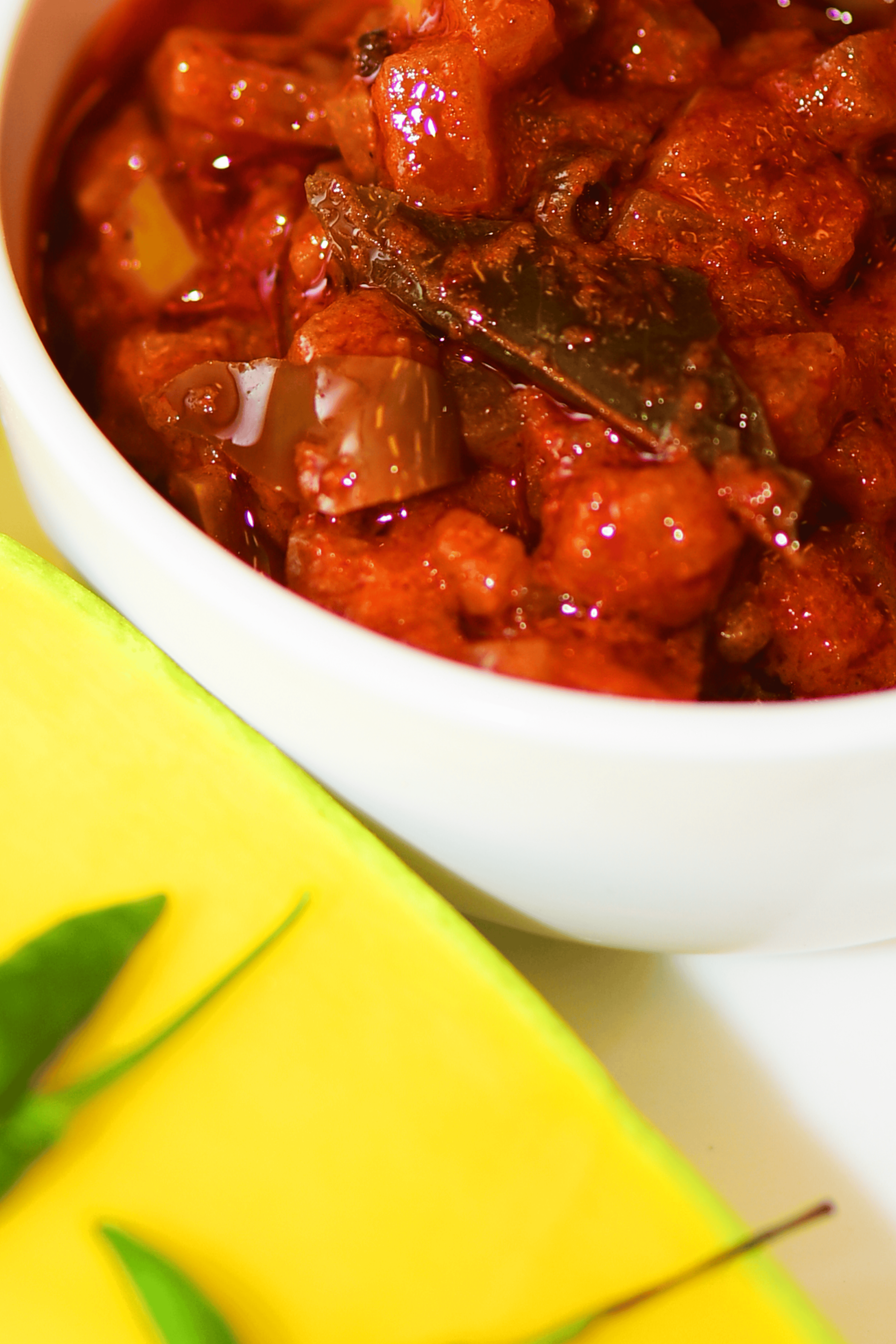
The sizzle of mustard seeds in hot gingelly oil. The sharp tang of raw mango on the tongue. The warm earthiness of fenugreek and curry leaves. Together, these notes form the symphony of Kadumanga Achar—Kerala’s beloved mango pickle. A staple in homes and feasts across the state, this vibrant condiment is far more than a side dish. It is a bite-sized expression of culture, memory, and craftsmanship that defines southern India.
At Niraamaya Retreats Surya Samudra in Kovalam, perched where the Arabian Sea meets the coast, this cherished recipe is celebrated as part of the retreat’s homage to Kerala’s culinary heritage. It is lovingly crafted by Executive Chef Umeshkumar SS, whose reverence for regional cuisine shines through every bite. The dish is prepared traditionally, staying true to its roots while offering guests a taste of authentic regional flavours.
Kerala-style mango pickle- Kadumanga Achar by Executive Chef Umeshkumar SS, Niraamaya Retreats
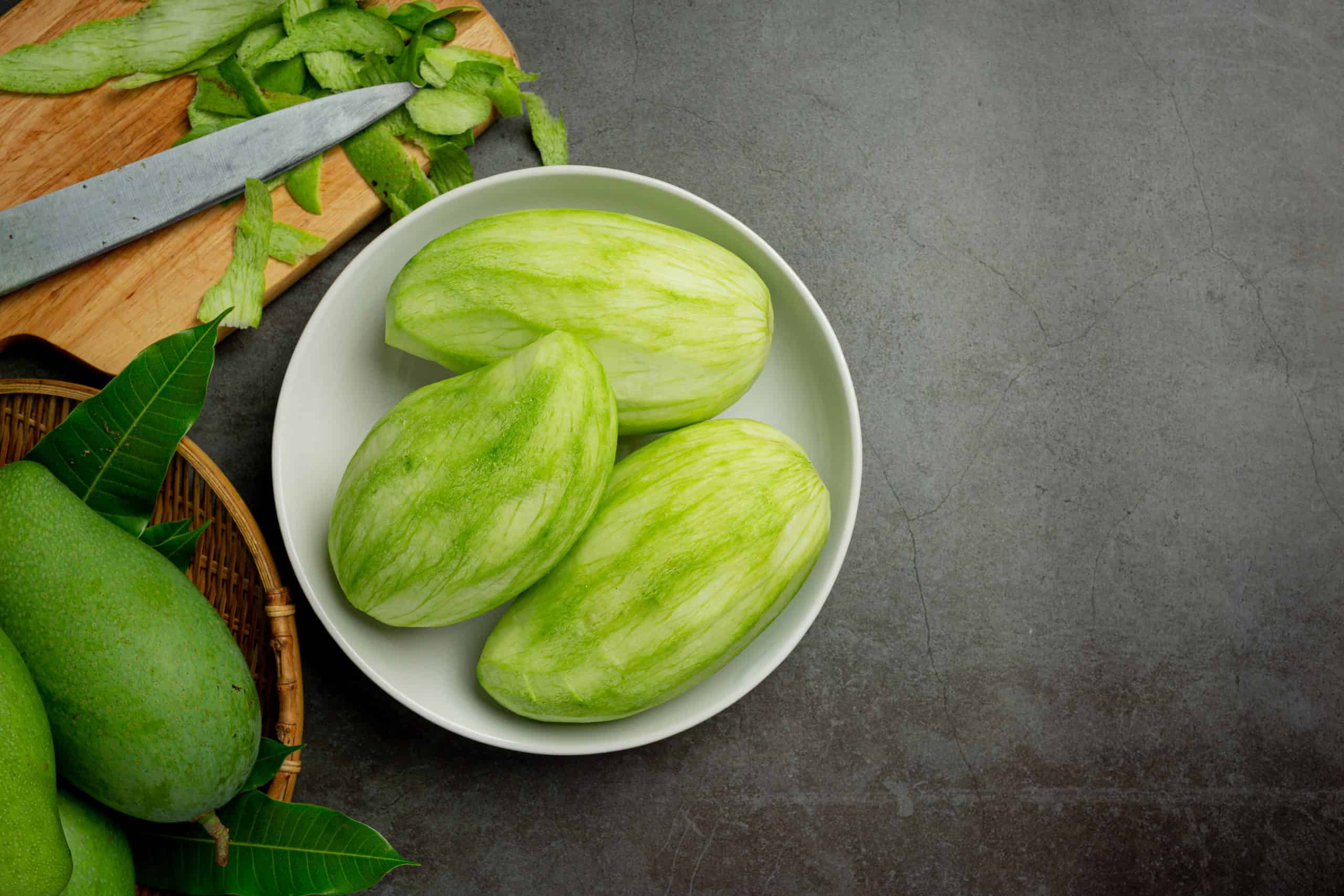
The team at Niraamaya uses locally sourced, fresh green mangoes and high-quality spices to craft the pickle in-house. Here’s a closer look at the ingredients and process that bring this traditional delicacy to life:
Ingredients:
- Raw green mangoes (peeled and chopped): 2 cups
- Salt: 2 tbsp (adjust to taste)
- Gingelly oil (sesame oil): ¼ cup
- Mustard seeds: 1 tsp
- Fenugreek seeds: ½ tsp
- Kashmiri red chili powder: 2–3 tsp
- Asafoetida (hing): ¼ tsp
- Fresh curry leaves: A few sprigs
- White vinegar (optional): 2 tsp
To begin, the mango pieces are tossed in salt and set aside to rest. This step helps draw out moisture and develop the desired texture. Separately, mustard and fenugreek seeds are dry-roasted until aromatic, then coarsely ground to enhance their flavour.
Next, gingelly oil is heated and tempered with mustard seeds and curry leaves. As the leaves crackle, they release a signature fragrance that marks the heart of Kerala cooking. The ground spices, chili powder, and asafoetida are stirred in swiftly to prevent scorching. Finally, the mangoes are added and coated evenly in the spicy mixture. A dash of vinegar is optional, offering extra tang and shelf life.
Once cooled, the pickle is stored in clean glass jars. Though it can be served soon after preparation, allowing it to rest for a few days enriches its depth and complexity.
A Must-Have at Every Sadhya
Kadumanga Achar features prominently in a Sadhya, Kerala’s traditional vegetarian feast served on banana leaves. It offers a necessary sharpness that balances the creamy textures of dishes like avial and olan, and the sweetness of payasam. Its punchy presence on the leaf adds both flavour and contrast.
Outside festival settings, the pickle brings joy to the simplest of meals. Whether paired with kanji (rice porridge) or a portion of curd rice, its zesty charm enhances everyday dining.
Pickle as a Cultural Symbol in Kerala
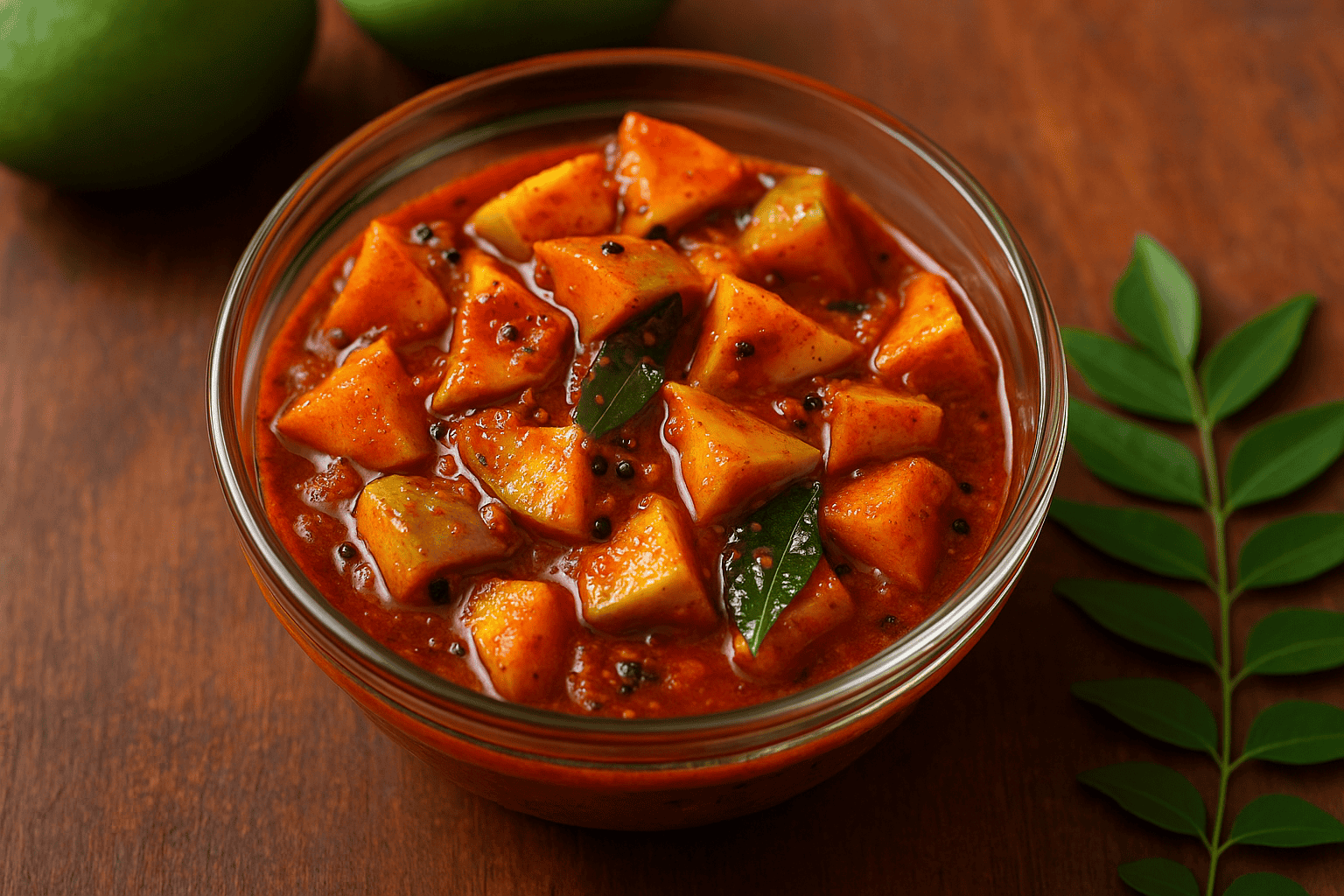
Kadumanga Achar is more than the sum of its ingredients. It represents seasonal wisdom, generational knowledge, and the mindful act of preservation. Each jar carries a hint of monsoon air, the sound of laughter in family kitchens, and the unspoken bonds forged over food lovingly made and shared.
At Niraamaya, the pickle is part of a curated culinary experience that draws guests into the heart of Kerala’s food culture. Served alongside regional favourites, it often becomes the most requested item at the table—a testament to its enduring appeal.
Chef’s Reflection
Umeshkumar SS, Executive Chef, Niraamaya Retreats Surya Samudra, Kovalam, said, “This traditional Kerala mango pickle captures the essence of our culinary heritage—tangy, spicy, and bursting with flavour. It’s a staple that brings back memories of festive meals and family gatherings.”
In an age of fusion foods and experimental plates, Kadumanga Achar is a return to origin—a reminder of the timeless beauty in simplicity and tradition. For those journeying through Kerala, a spoonful of this pickle may linger long after the last bite, as both a flavour and a feeling.
In the heart of Kerala’s vibrant culinary tapestry, pickles—or achar, as they are lovingly called—are not mere condiments; they are a deep expression of memory, culture, and craftsmanship. Passed down through generations, Kerala’s pickling legacy stands as a testament to the state’s instinctive artistry in preserving the abundance of nature, wrapped in spice, salt, and oil.
Kerala’s Pickling Legacy
Kadumanga Achar holds a place of pride in Malayali households. The name itself is telling, kadu means strong or sharp, while manga means mango, hinting at the pickle’s bold flavour profile. Though recipes may differ from kitchen to kitchen, the essence remains: a fiery, tangy, oil-rich preparation that pairs beautifully with both everyday meals and elaborate feasts.

The process of pickling in Kerala is a deeply seasonal activity, traditionally undertaken during the peak mango harvest. It’s not rushed. It’s a ritual—one that has been passed down through generations with care and reverence.
In a traditional Kerala kitchen, the making of pickle was once a seasonal ritual, deeply tied to the cycles of harvest and the rhythms of daily life. With the onset of mango season, households would come alive with the fragrance of cut fruit, roasting spices, and simmering gingelly oil. Grandmothers, mothers, and daughters would gather around large ceramic jars called bharanis, each family guarding its own time-honoured recipes like precious heirlooms.
This ritual wasn’t just about food—it was about continuity. It was about invoking the blessings of ancestors, preserving the essence of fleeting seasons, and crafting something meant to outlast the perishability of raw ingredients.
Kerala’s pickles are a study in complexity. They aren’t content with merely being tart or spicy; they weave an orchestra of flavours—fiery, sour, salty, bitter, pungent, and sometimes even sweet.

The iconic mango achar (kadumanga achar when made from tiny tender mangoes) is a classic favourite. It bursts with the tang of raw mangoes, mellowed by mustard, fenugreek, asafoetida, and sun-kissed chilli powder. Lemon achar, preserved in salt and slowly maturing into a deep, mellow sourness, accompanies many traditional meals. Inji puli—a ginger-tamarind pickle sweetened with jaggery—is another exquisite creation, often making an appearance during the grand Onam Sadhya feast.
But Kerala’s pickling prowess doesn’t stop at fruits. Meats and seafood too find their way into the pickle jars. Meen achar (fish pickle), erachi achar (beef pickle), and konju achar (prawn pickle) are beloved by many Malayali households and bring an umami richness that elevates even the simplest of meals.
The Magic of Preservation
Unlike quick Western pickles, Kerala’s traditional methods involved meticulous slow-curing. Mangoes would be sun-dried, limes would be salted for weeks until their skin softened, and spices would be freshly roasted and ground by hand. Every step mattered: the quality of oil (always unrefined coconut oil or sesame oil), the intensity of salt (a natural preservative), the freshness of spices, and above all, patience.
Some pickles were meant to mature for months before tasting—the flavours deepening, merging, transforming as they sat sealed in their dark jars. Pickling, here, wasn’t merely a way to preserve food; it was a way to amplify it, to create something that was more than the sum of its parts.
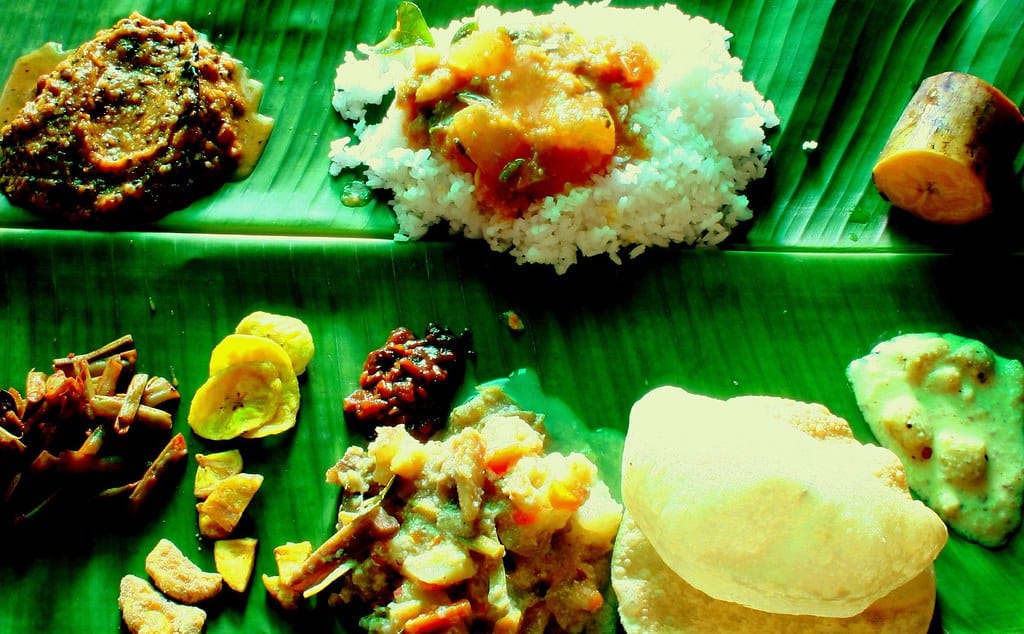
No traditional Kerala meal feels complete without a dollop of pickle brightening the banana leaf. Whether it’s a humble lunch of kanji (rice gruel) and payar (green gram curry) or a festive Sadhya, a spoonful of pickle adds a sharp, invigorating contrast to the otherwise soothing, coconut-laden dishes.
Pickles aren’t served as appetizers or afterthoughts; they are treated with reverence. In fact, in many feasts, the first items to be served on the leaf are a line-up of pickles—setting the tone for the multi-course experience that follows.
Beyond Nostalgia: Pickles as Cultural Anchors
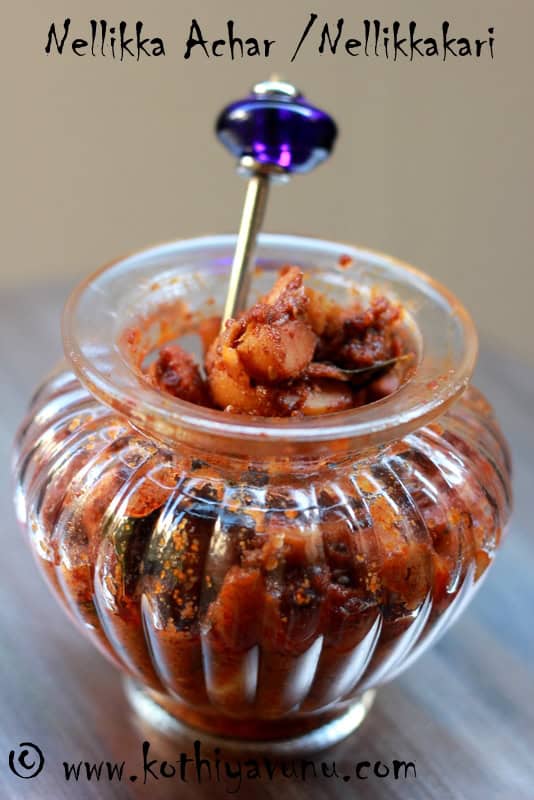
Today, while supermarket shelves may groan under the weight of mass-produced pickles, Kerala’s artisanal pickle makers are quietly leading a revival. Homegrown brands, boutique kitchen enterprises, and even celebrated chefs are returning to the old ways—small-batch production, locally sourced ingredients, heirloom recipes, and eco-friendly packaging.
There’s a newfound love for forgotten varieties too: nellikka achar (gooseberry pickle), chena achar (yam pickle), pavakka achar (bitter gourd pickle)—flavours that speak of seasons, landscapes, and lost home kitchens.
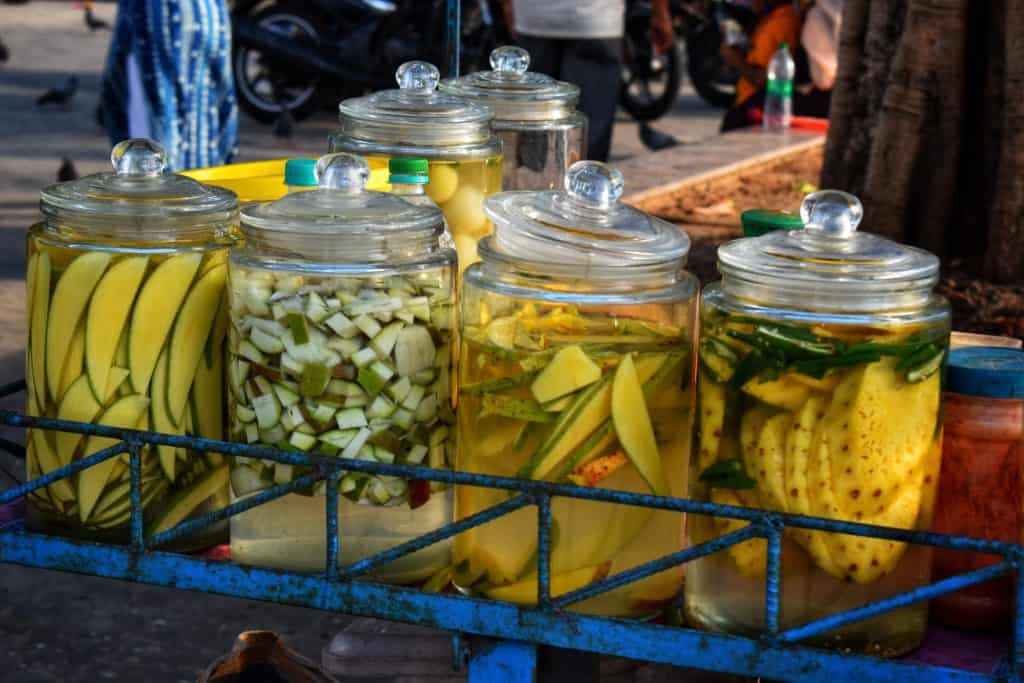
In an era of instant food and disappearing culinary traditions, Kerala’s pickles remind us of a slower, more intentional way of life. They embody the patience of sun-drying, the wisdom of spice blending, and the deep human desire to hold onto fleeting moments of flavour.
For Malayalis scattered across the world, a jar of kadumanga or meen achar tucked into a suitcase is more than food—it’s home. It’s mother’s hands. It’s the monsoon rain. It’s laughter around a large table, banana leaves unfurling, stories tumbling out.
It is, simply, a legacy bottled with love.
Read more –Latest



